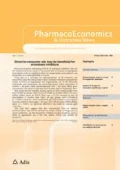COVID-19 QALY values differ when assessed by two published US EuroQol 5-dimension 5-level (EQ-5D-5L) value sets, only one of which allows for discounting of future health outcomes, according to findings of a study published in The Patient - Patient-Centered Outcomes Research.
In November 2020, 1153 US adults completed the EQ-5D-5L instruments which included five items and a visual analogue scale (VAS; rated from best [100] to worst [0]), and self-reported their demographical data, COVID-19 symptoms and whether they were in an at-risk population. Two US value sets were applied to the EQ-5D-5L responses to produce QALY values, and QALYs were estimated by VAS decile and a generalised linear model of COVID-19 outcomes. The first US EQ-5D-5L valuation study was conducted in 2016 with 8222 respondents from all US states, and allowed for discounting of future health outcomes. The second study was conducted in 2017 with 1062 respondents from six metropolitan areas in the US and did not allow discounting.
Discounted values were higher than undiscounted values for each VAS decile.
QALY losses were significantly greater in adults at increased risk of COVID-19 infection, with a fever in the past day, and with one or more other COVID-19 symptoms (all p<0.01). QALY values in adults at high risk of symptomatic COVID-19 infection were 0.68 and 0.10 when determined using the 2016 discounted and 2017 undiscounted EQ-5D-5L value set, respectively.
"This study provides economists with accurate health valuations for COVID-19 that can be used to analyze different health interventions," said the authors. "Future research should focus on the preferences of hospitalized patients to fully understand the burden of COVID-19," they commented.
Reference
Poteet S, et al. QALYs for COVID-19: A Comparison of US EQ-5D-5L Value Sets. The Patient - Patient-Centered Outcomes Research : 30 Mar 2021. Available from: URL: http://doi.org/10.1007/s40271-021-00509-z
Rights and permissions
About this article
Cite this article
COVID-19 QALY values differ between US EQ-5D-5L value sets. PharmacoEcon Outcomes News 876, 13 (2021). https://doi.org/10.1007/s40274-021-7627-x
Published:
Issue Date:
DOI: https://doi.org/10.1007/s40274-021-7627-x

